
Keywords: homing endonucleases

|
Computational and experimental performance of CRISPR homing gene drive strategies with multiplexed gRNAsS. E. Champer, S. Y. Oh, C. Liu, Z. Wen, A. G. Clark, P. W. Messer and J. Champer, Science Advances, 6:eaaz0525. 2020.
The rapid evolution of resistance alleles poses a major obstacle for genetic manipulation of populations with CRISPR homing gene drives. One proposed solution is using multiple guide RNAs (gRNAs), allowing a drive to function even if some resistant target sites are present. Here, ... Keywords: gene drive genetics, gene drive synthetic, homing endonucleases, insects |
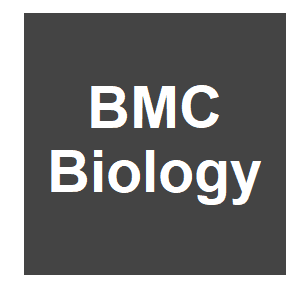
|
Performance analysis of novel toxin-antidote CRISPR gene drive systemsJ. Champer, I. K. Kim, S. E. Champer, A. G. Clark and P. W. Messer, BMC Biology, 18:27. 2020.
CRISPR gene drive systems allow the rapid spread of a genetic construct throughout a population. Such systems promise novel strategies for the management of vector-borne diseases and invasive species by suppressing a target population or modifying it with a desired trait. ... Keywords: gene drive genetics, gene drive synthetic, homing endonucleases, insects |

|
A transcomplementing gene drive provides a flexible platform for laboratory investigation and potential field deploymentV. López Del Amo, A. L. Bishop, H. M. Sánchez C, J. B. Bennett, X. Feng, J. M. Marshall, E. Bier and V. M. Gantz, Nature Communications, 11:352. 2020.
CRISPR-based gene drives can spread through wild populations by biasing their own transmission above the 50% value predicted by Mendelian inheritance. These technologies offer population-engineering solutions for combating vector-borne diseases, managing crop pests, and ... Keywords: gene drive genetics, gene drive synthetic, homing endonucleases, insects |

|
Gene Drive – EsveltiBiology, , 2019.
Dr. Kevin Esvelt explains how CRISPR-based gene drives can be used to spread genetic alterations through wild populations. He discusses strategies to maximize benefit and minimize risk. Keywords: gene drive genetics, gene drive synthetic, homing endonucleases, insects |
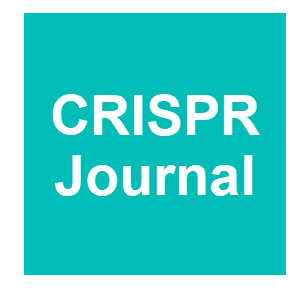
|
Redkmer: An assembly-free pipeline for the identification of abundant and specific X-chromosome target sequences for X-shredding by CRISPR endonucleasesPapathanos, PAW, Nikolai, CRISPR Journal, 1:88-98. 2018.
CRISPR-based synthetic sex ratio distorters, which operate by shredding the X-chromosome during male meiosis, are promising tools for the area-wide control of harmful insect pest or disease vector species. X-shredders have been proposed as tools to suppress insect populations by ... Keywords: gene drive genetics, gene drive synthetic, homing endonucleases, insects |

|
Gene Drives Explained – Questions about Gene DrivesQuestion., , 2017.
Hi, thanks for watching on the channel Question, where we seek to better understand scientific breakthroughs by asking and answering questions. Today’s video topic is on gene drives - a way to increase the frequency of an allele in a population. Gene drives work hand in hand ... Keywords: gene drive genetics, gene drive synthetic, homing endonucleases, insects |

|
The promise and peril of CRISPR gene drivesZentner, GEW, Michael J. C., Bioessays, 39:1-9. 2017.
Gene drives are selfish genetic elements that use a variety of mechanisms to ensure they are transmitted to subsequent generations at greater than expected frequencies. Synthetic gene drives based on the clustered regularly interspersed palindromic repeats (CRISPR) genome editing ... Keywords: gene drive genetics, gene drive synthetic, homing endonucleases, insects |
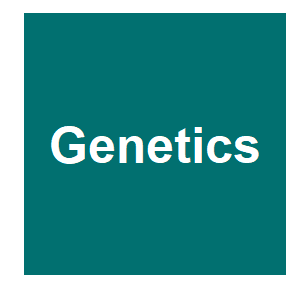
|
Requirements for Driving Antipathogen Effector Genes into Populations of Disease Vectors by HomingBeaghton, AH, Andrew; Nolan, Tony; Crisanti, Andrea; Godfray, H. Charles J.; Burt, Austin, Genetics, 205:1587-1596. 2017.
There is a need for new interventions against the ongoing burden of vector-borne diseases such as malaria and dengue. One suggestion has been to develop genes encoding effector molecules that block parasite development within the vector, and then use the nuclease-based homing ... Keywords: gene drive genetics, gene drive synthetic, homing endonucleases, insects |

|
Gene drive through a landscape: Reaction-diffusion models of population suppression and elimination by a sex ratio distorterBeaghton, AB, P. J.; Burt, A., Theoretical Population Biology, 108:51-69. 2016.
Some genes or gene complexes are transmitted from parents to offsprihg at a greater-than-Mendelian rate, and can spread and persist in populations even if they cause some harm to the individuals carrying them. Such genes may be useful for controlling populations or species that ... Keywords: gene drive genetics, gene drive synthetic, homing endonucleases, insects |
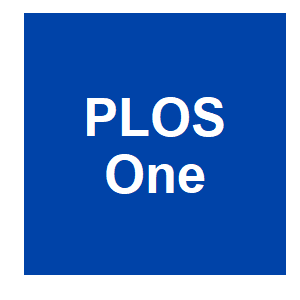
|
The design and in vivo evaluation of engineered I-OnuI-based enzymes for HEG gene driveChan, YST, R.; Jarjour, J.; Huen, D. S.; Stoddard, B. L.; Russell, S., PLOS One, 8:e74254. 2013.
The homing endonuclease gene (HEG) drive system, a promising genetic approach for controlling arthropod populations, utilises engineered nucleases to spread deleterious mutations that inactivate individual genes throughout a target population. Previous work with a naturally ... Keywords: gene drive genetics, gene drive synthetic, homing endonucleases, insects |

|
Optimising homing endonuclease gene drive performance in a semi-refractory species: The Drosophila melanogaster experienceChan, YSH, D. S.; Glauert, R.; Whiteway, E.; Russell, S., PLOS One, 8:e54130. 2013.
Homing endonuclease gene (HEG) drive is a promising insect population control technique that employs meganucleases to impair the fitness of pest populations. Our previous studies showed that HEG drive was more difficult to achieve in Drosophila melanogaster than Anopheles gambiae ... Keywords: gene drive genetics, gene drive synthetic, homing endonucleases, insects |

|
Germline excision of transgenes in Aedes aegypti by homing endonucleasesAryan, AA, M. A. E.; Myles, K. M.; Adelman, Z. N., Scientific Reports, 3:1603. 2013.
Aedes (Ae.) aegypti is the primary vector for dengue viruses (serotypes1-4) and chikungunya virus. Homing endonucleases (HEs) are ancient selfish elements that catalyze double-stranded DNA breaks (DSB) in a highly specific manner. In this report, we show that the HEs Y2-I-AniI, ... Keywords: gene drive genetics, gene drive synthetic, homing endonucleases, insects |
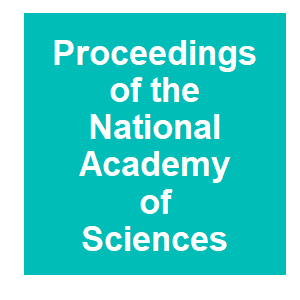
|
Requirements for effective malaria control with homing endonuclease genesDeredec, AG, H. C. J.; Burt, A., Proceedings of the National Academy of Sciences of the United States of America, 108:e874-e880. 2011.
Malaria continues to impose a substantial burden on human health. We have previously proposed that biological approaches to control the mosquito vector of disease could be developed using homing endonuclease genes (HEGs), a class of selfish or parasitic gene that exists naturally ... Keywords: gene drive genetics, gene drive synthetic, homing endonucleases, insects |

|
Insect population control by homing endonuclease-based gene drive: An evaluation in Drosophila melanogasterChan, YSN, D. A.; Huen, D. S.; Russell, S., Genetics, 188:33-44. 2011.
Insects play a major role as vectors of human disease as well as causing significant agricultural losses. Harnessing the activity of customized homing endonuclease genes (HEGs) has been proposed as a method for spreading deleterious mutations through populations with a view to ... Keywords: gene drive genetics, gene drive synthetic, homing endonucleases, insects |

|
A synthetic homing endonuclease-based gene drive system in the human malaria mosquitoWindbichler, NM, M.; Papathanos, P. A.; Thyme, S. B.; Li, H.; Ulge, U. Y.; Hovde, B. T.; Baker, D.; Monnat, R. J.; Burt, A.; Crisanti, A., Nature, 473:212-215. 2011.
Genetic methods of manipulating or eradicating disease vector populations have long been discussed as an attractive alternative to existing control measures because of their potential advantages in terms of effectiveness and species specificity(1-3). The development of ... Keywords: gene drive genetics, gene drive synthetic, homing endonucleases, insects |

|
Targeting the X chromosome during spermatogenesis induces Y chromosome transmission ratio distortion and early dominant embryo lethality in Anopheles gambiaeWindbichler, NP, P. A.; Crisanti, A., PLOS Genetics, 4:1-9. 2008.
We have exploited the high selectivity of the homing endonuclease I-PpoI for the X-linked Anopheles gambiae 28S ribosomal genes to selectively target X chromosome carrying spermatozoa. Our data demonstrated that in heterozygous males, the expression of I-PpoI in the testes ... Keywords: gene drive genetics, gene drive synthetic, homing endonucleases, insects |

|
Homing endonuclease mediated gene targeting in Anopheles gambiae cells and embryosWindbichler, NP, P. A.; Catteruccia, F.; Ranson, H.; Burt, A.; Crisanti, A., Nucleic Acids Research, 35:5922-5933. 2007.
Homing endonuclease genes (HEGs) are selfish genetic elements that combine the capability to selectively disrupt specific gene sequences with the ability to rapidly spread from a few individuals to an entire population through homologous recombination repair events. Because of ... Keywords: gene drive genetics, gene drive synthetic, homing endonucleases, insects |
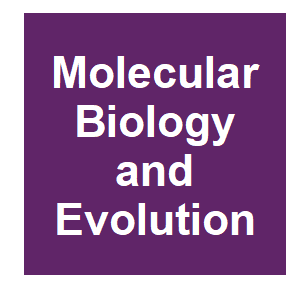
|
Degeneration and domestication of a selfish gene in yeast: Molecular evolution versus site-directed mutagenesisKoufopanou, VB, A., Molecular Biology and Evolution, 22:1535-1538. 2005.
VDE is a homing endonuclease gene in yeasts with an unusual evolutionary history including horizontal transmission, degeneration, and domestication into the mating-type switching locus HO. We investigate here the effects of these features on its molecular evolution. In addition, ... Keywords: gene drive genetics, gene drive synthetic, homing endonucleases, insects |

|
Recurrent invasion and extinction of a selfish geneGoddard, MRB, A., Proceedings of the National Academy of Sciences of the United States of America, 96:13880-13885. 1999.
Homing endonuclease genes show super-Mendelian inheritance, which allows them to spread in populations even when they are of no benefit to the host organism. To test the idea that regular horizontal transmission is necessary for the long-term persistence of these genes, we ... Keywords: gene drive genetics, gene drive synthetic, homing endonucleases, insects |

|
Genetics-driving genes and chromosomesCharlesworth, B, Nature, 332:394-395. 1988.
Thereare several genetic and chromosomal systems in which Mendel's first law - the equal probability of transmission of maternal and paternal alternative alleles or homologues - is violated. This phenomenon was named 'meiotic drive' in 1957 by Sandler and Novitski, who drew ... Keywords: gene drive genetics, gene drive synthetic, homing endonucleases, insects |

Contact
David O’Brochta
Foundation for the
National Institutes of Health
geneconvenevi@fnih.org
RSS

